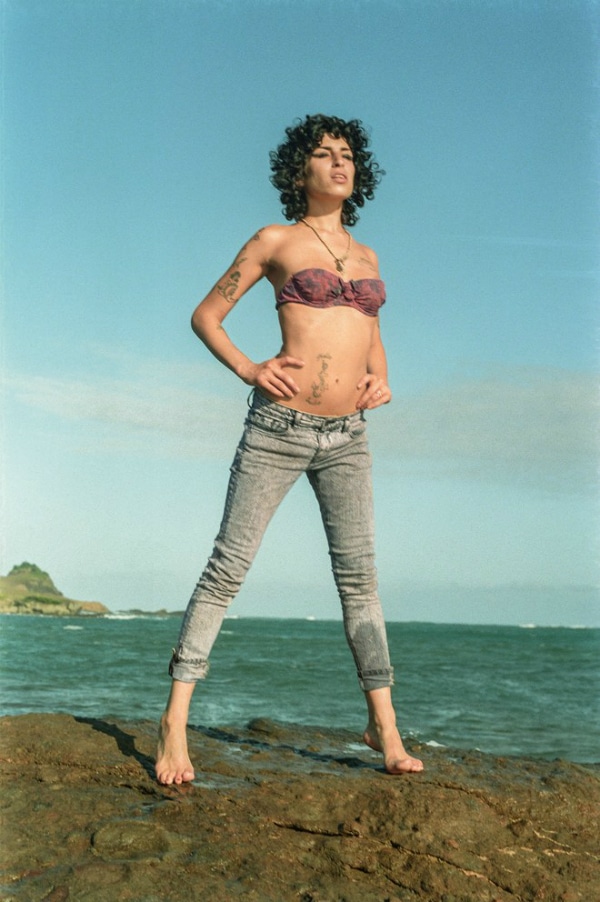When it was reported that pop singer Demi Lovato had potentially overdosed on heroin, a particular digital gasp quickly made its way around the Internet.
We’re used to seeing images of bright young things spilling out of clubs and into cabs, the cocktails and bottle service, even cocaine, that perennial party drug, all cheekily implied (and now there is also the ubiquitous vape). But heroin is the problem of regular people, poor people, albeit at epidemic levels: in Camden, New Jersey, and Burlington, Vermont; Billings, Montana, and Baltimore. The idea, almost certainly fantasy, of Lovato shooting up in her Hollywood Hills mansion was more sordid than anything anyone had yet to understand about her addiction.
It only took a day for articles to pop up with another name in their headlines: Amy Winehouse, who has been tethered posthumously to the drug in a way that she actually wasn’t at the end of her life, despite enduring misconceptions. In 2011, Winehouse died of alcohol poisoning, her body weakened from years of bulimia and past heroin addiction. But she had been clean from the drug when she passed away; she had kicked drugs. When news of Lovato’s overdose broke, British tabloid the Mirror dug through footage in her Simply Complicated documentary to find a moment she had “admitted” to “idolizing tragic Amy Winehouse.” Another Mirror story advertises: “Demi Lovato staggers out of Hollywood nightclub in last photos before singer’s ‘heroin’ overdose.”
Blake Wood was a friend of Winehouse’s at the peak of her own “staggers out of” heyday: He met her at the beginning of 2008, after the release of her megahit album Back to Black. He was a 22-year-old photographer from Vermont who had spent a year in New York documenting his social circle: friends in fashion, music, and art. He arrived in London at the home of Kelly Osbourne, where he met Winehouse, then 24, a loudmouth north London foil to his soft-spoken, sober shyness, and the two formed an immediate close relationship. Wood spent the next two years documenting one of the most tumultuous periods in Winehouse’s life—and his—and has, 10 years later, released a portion of these images in a book, Amy Winehouse, published by Taschen. They are about as far away from paparazzi photos as you could possibly get.

Winehouse gets buried in the sand on Cariblue Beach, St. Lucia, 2009. Photo by Blake Wood.
The majority of photographs in Amy Winehouse are from a lesser-known period in the heady five years between Winehouse’s lightening-fast ascendence to superstardom and her death, when she, Wood, and a few others moved to the island of St. Lucia for six months in a bid to get the singer clean. It was after a disastrous performance at a music festival on the Isle of Wight in September of 2008 that Winehouse decided she needed to stop taking drugs. “We got to just hang,” Wood says of the extended vacation, in which they rode horses, spent time with locals, and swam in the ocean. There were no paparazzi, except for a few that occasionally took pictures of the star from the water.

Winehouse strikes a pose on Plantation Beach, St. Lucia, 2009. Photo by Blake Wood.
Wood’s photos from St. Lucia are surreally peaceful; Winehouse lets her curly, short hair free from under her usual beehive, wears little of the heavy wing-tipped eye makeup she was known for, and runs around in jeans and a bikini top. The colors are bright but soft—greens from palm trees, gray-blue water. Winehouse poses naturally and playfully; she looks happy. The book’s soft white cover, with a portrait of Winehouse looking nearly regal on horseback, serves to physically encase her in a world entirely opposite from the one she can’t escape—even now—in the papers: of dark back-alleys, stage doors, backseats of taxies, and hard cobblestoned streets. We know from the other seminal documentary of Winehouse’s life, Asif Kapadia’s Amy (which Wood contributed to but about which he has some reservations) that there were a few more sinister undercurrents to the trip. Winehouse was drinking heavily, and her father accompanied her eventually with his own film crew, who were making a television documentary about him and his famous daughter despite her desire to stay out of the public eye. Still, the feeling of some kind of magic persists in the images.
(Excerpt) Read More at: Vogue.com




